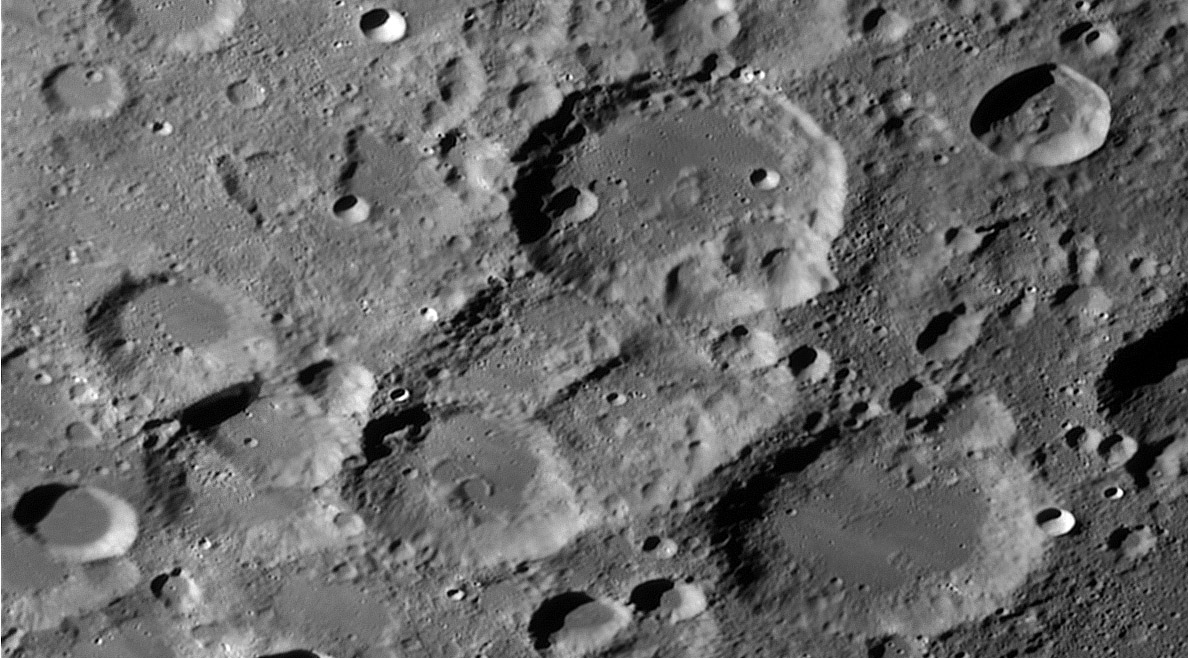
image by Wes Higgins
This cluster of large and battered features between Maginus and Maurolycus records many events, almost all catastrophic, that probably spanned nearly the entire 4.5 billion years of lunar history. The oldest materials are the surfaces between the craters. This is presumably the anorthositic crust created by the cooling of the magma ocean 4.5 b.y. ago, mixed to a depth of 2 km of more by early impacts. The oldest craters, such as the odd formation that is Heraclitus (center), are really just the oldest recognizable craters, earlier ones that must have formed are too indistinct to be detected now. Superposed are somewhat younger craters such as Licetus (top) and Heraclitus D (below). The cluster of three craters on the southeast rim of Licetus may be basin secondaries from the formation of Imbrium or Nectaris. The smooth and relatively uncratered floors of Cuvier (bottom right) and other craters perhaps contain more fluidized ejecta from basin formation. Most of the relatively young craters, such as the bright bowls within Heraclitus and near the top of the image, are fairly small, and 31 km wide Faraday G (upper right) is not quite as young. Other than random small impact pits, the youngest features here are the faint ray from Tycho that crosses Cuvier’s floor, and the little clumps of pits (especially southeast of Licetus) that may be secondary crater clusters from the same source.
Technical Details:
August 3, 2007, 18″ Reflector, Infinity 2-1m camera, 4xPowermate, MAP processing (50 points) stack of 500 frames. This is an excerpt of a larger image, visible on Wes’ website
Related Links:
Rükl plate 65, 66, 73 & 74
An earlier view
Yesterday's LPOD: Yardangs
Tomorrow's LPOD: A Luminous Bull in a Celestial China Cabinent
COMMENTS?
Register, Log in, and join in the comments.



